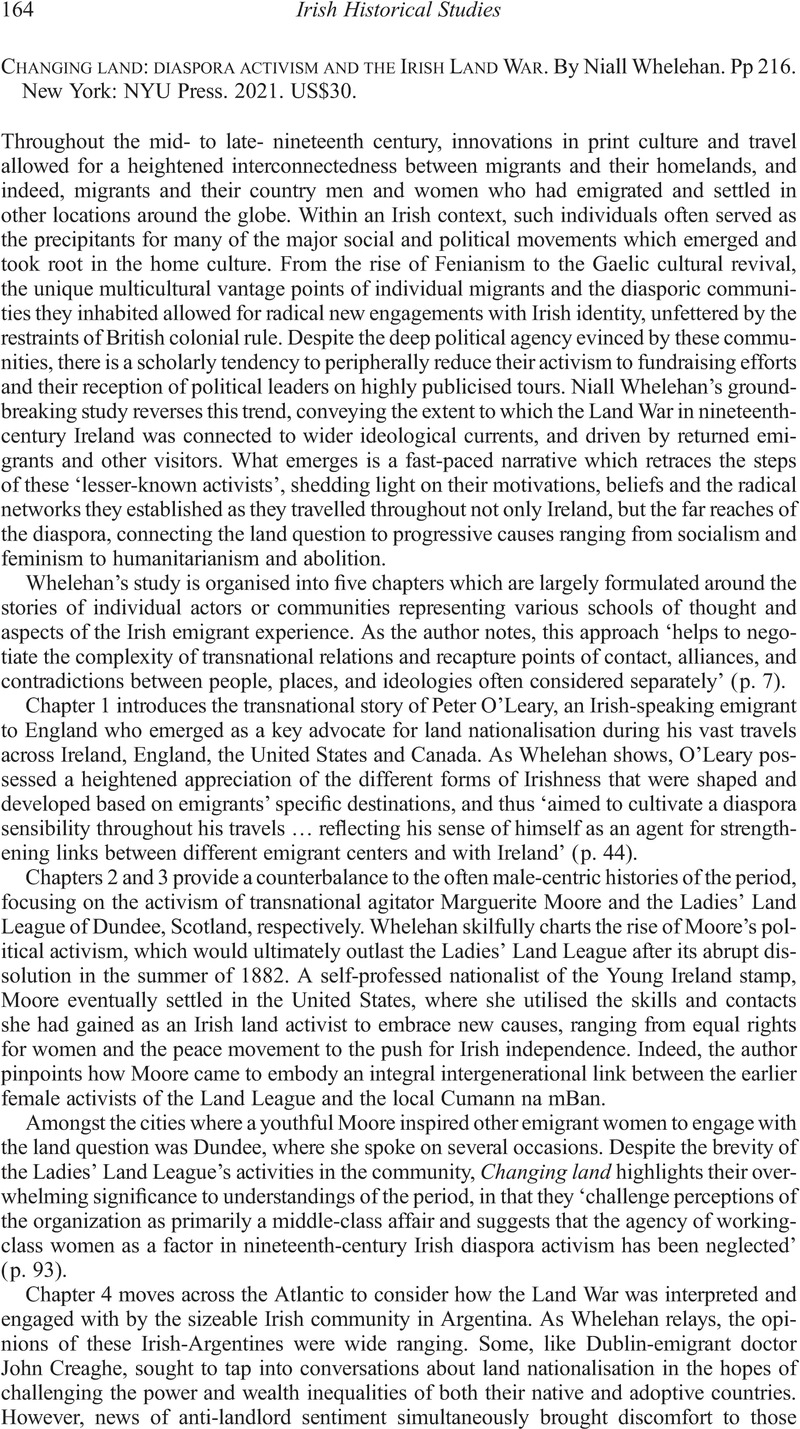No CrossRef data available.
Article contents
Changing land: diaspora activism and the Irish Land War. By Niall Whelehan. Pp 216. New York: NYU Press. 2021. US$30.
Review products
Changing land: diaspora activism and the Irish Land War. By Niall Whelehan. Pp 216. New York: NYU Press. 2021. US$30.
Published online by Cambridge University Press: 31 May 2023
Abstract
An abstract is not available for this content so a preview has been provided. Please use the Get access link above for information on how to access this content.

- Type
- Reviews and short notices
- Information
- Copyright
- Copyright © The Author(s), 2023. Published by Cambridge University Press on behalf of Irish Historical Studies Publications Ltd



